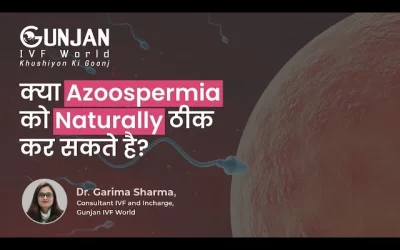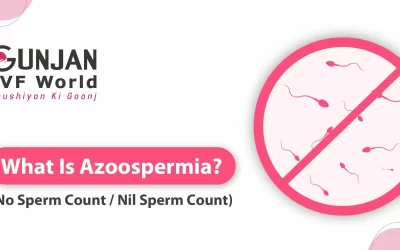20+ Years Of Experience as Fertility Specialists
20 Years Of Experience as a Fertility Specialists
National Fertility Awards 2023
Call Us
+919990044555
Medically, a male is said to have azoospermia if his ejaculate contains zero detectable sperm.
Azoospermia is a disease that affects more than 10-15% of infertile males. This issue might exist from birth or manifest itself later in life.
Azoospermia may be either obstructive or non-obstructive. Both conditions result from a failure of the reproductive system to function normally, while a shortage of sperm causes infertility.
Symptoms
The absence of sperm in the semen (a condition known as azoospermia) does not manifest in any noticeable ways.
When attempting to conceive, infertility occurs when the male spouse has an undetectable sperm count.
If a couple has not conceived a child after trying for a year without contraception, they are diagnosed as infertile. Unfortunately, infertility is often the first indicator of trouble.
Several factors might contribute to azoospermia, and these factors can result in observable signs and symptoms.
The following are examples of signs and symptoms that may point to the possibility that you have azoospermia:
- Reduced ejaculatory output; a “dry” erection (no or little semen)
- Urine that is cloudy after intercourse
- Urination that hurts
- Discomfort in the pelvic area
- Enlarged testicles
- A lack of size or development in the testicles
- Penis that is smaller than usual
- Puberty that is too early or too late
- Erection problems or inability to ejaculate
- Lacking sexual desire
- Decreased hair growth in males
- Increased breast size
- Loss of muscle mass
However, azoospermia may still exist even in the absence of these signs.
Also Read : What Is the Most Common Cause of Azoospermia?
Book An Appointment
Follow Us On
Diagnosis
Your doctor will ask you a series of questions designed to help with the diagnosis, such as:
- Previous history of fertility success or failure (your fertility potential).
- Childhood Diseases
- Surgical procedures and injuries that occur in the pelvic region (these things may lead to blocked ducts and inadequate testicular blood flow).
- Infections of the urinary or reproductive tract.
- History of STI.
- Radiation or chemotherapy treatment.
- Current and previous medications.
- Use of illegal substances, including alcohol and marijuana.
- Recent fevers, heat exposure, or regular use of saunas/steam rooms (Sperm cells die in the heat).
- Family history of cystic fibrosis, learning difficulties, infertility, or birth abnormalities.
Azoospermia is diagnosed using a combination of symptoms, medical history, and physical examination. Diagnostic procedures include:
- Semen Collection:
The sample of semen is centrifuged to look for undetectable sperm in the sediment if it is discovered to be sterile. If a patient has two out of three abnormal samples, he will be referred for further testing.
- Physical Examination:
The doctor checks for a varicocele and examines the testicles for size and volume.
- Hormone Analysis:
Testosterone, follicle-stimulating hormone and luteinizing hormone all play critical roles in male reproductive health; therefore, monitoring their levels is crucial
- Genetic Testing:
This procedure aims to determine whether or not a patient diagnosed with a vasospastic disorder is also a carrier of the CF gene mutation. In addition, if a patient is suspected of having Non-Obstructive Azoospermia, this test may be used to examine their Y chromosomes.
- Ultrasound:
Doppler and ultrasound of the scrotum may aid in determining testicular volume, sizing, and whether or not a varicocele or vas deferens is present. Ejaculatory duct occlusion can only be diagnosed using transrectal ultrasound.
Also Watch : Is Azoospermia Treatable
Conclusion
No one wants to hear the words “no sperm count” or the diagnosis of azoospermia. However, just because you have this illness doesn’t imply you can’t produce biological children.
The first step is to identify the root of the problem. After identifying and treating the root cause of the obstruction, your doctor may recommend various treatments. IVF and other assisted reproductive technologies may be options if you and your spouse cannot conceive naturally.
Share this with
Related Videos
Can We Treat Azoospermia Naturally?
Azoospermia refers to a zero sperm count or a zero sperm count, which must be shown in two consecutive tests performed at an interval of around 4-6 weeks between each report
What Is Azoospermia (No Sperm Count / Nil Sperm Count)
Azoospermia is a condition in which no sperm are present in the ejaculate (or semen) after orgasm. About 1% of all men and 10% to 15% of infertile men have azoospermia
Follow Us On
About Author





